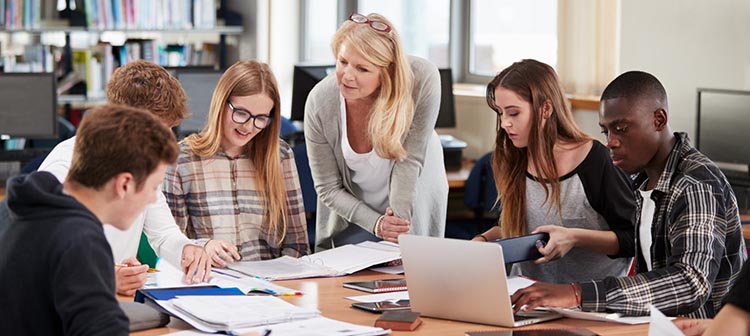
From student newspapers to history projects and beyond, schools can engage former students to help build learning pathways.
From K-12 Dive
By Lauren Barack
Sept. 29, 2021
When student newspaper editors at the Latin School of Chicago dug into school papers from the Vietnam era they found a voice they didn’t hear in their own pages: opinionated, critical and even controversial. Reaching out to alumni who had run “The Forum,” the name of the school paper, they were able to learn what had driven students then, while finding a new direction for themselves now.
“They asked those editors about the experience and, with support from the administration, made their current journalism more hard-hitting,” said Teresa Sutter, the school’s director of alumni programming and archivist. “That was exciting.”
Private K-12 schools often look to their former students for fundraising efforts while encouraging these graduates to stay in touch through alumni activities, as well. But schools public and private alike can choose to loop former students more directly into curricula — whether that means helping to guide a student newspaper into a new direction or enhancing class projects with real-world examples and context.
In doing so, educators can help classes build connections with former students who took the same classes or had the same teachers, gain new insight about their studies, and also find support as they forge their next chapter after school.
Making the connection
Helping to change the direction of the newspaper at the Latin School of Chicago is just one way former students helped inspire or shape the current students and their school work. After speaking with the alumni editors, two students wrote a piece that challenged the paper to return to its roots, stating the newspaper should be “…a forum for students, alums, headmasters, and even board members to express and discuss their opinions on hot topics,” they said.
And that direction is now evident in the stories students write and publish, said Sutter.
“They tackle issues beyond the school more than they did before and definitely plunge headlong into examining controversial issues at the school level, too,” she said. “They didn’t really do much of that before.”
But to make these opportunities possible, schools need a system for maintaining those connections with alumni in the first place.
At Geneseo High School in Illinois, the school built an online database that included details of former alumni so current students could reach out to them with questions. The available information includes current occupation, graduation year, sports played in school and influences alumni felt made a difference for them while they were in high school.
There are about 1,000 alumni in Geneseo’s database, and students have reached out with a variety of queries, many of which center on next steps as they begin their college years. One student, who had won a scholarship to the Air Force Academy in Colorado, reached out to a professor and Geneseo alum with questions about the school, said Principal Travis Mackey.
Another student connected with a Geneseo alum who graduated from Arkansas State University, where he planned to attend that fall. And other alumni have participated more directly with classes, including a “Scooby Doo” producer who talked to an art class about his work in animation.
The experience of linking alumni with today’s students has been so positive that recent graduates are also coming back to volunteer, to “start helping the next generation, as well,” said Mackey, who believes these connection make a big impact on high-schoolers.
“Hearing from someone we may know, or people who walked the same hallways and sat in the same seats, we thought this would be of great benefit for our students,” Mackey said.
Bringing history alive
Hearing from former student editors at the Latin School of Chicago helped to bring the past into the present for current students. And that kind of connection is also at play at the University School of Milwaukee, in Wisconsin. There, 8th-graders take part in an annual project, “The Price of Freedom,” run by department chair and 2018 Wisconsin State History Teacher of the Year Chuck Taft.
The annual oral history assignment asks students to reach out to alum who are military veterans and active duty members to interview them. Those interviewed share their experiences in the military, including time served in MASH units or handling Army scout dogs, and current students also use journals and even letters military personnel wrote home.
The interview recordings ultimately make their way onto the school’s website, linking alumni to curriculum every year. And when they’re done with the assignment, students also write what are called “reflections,” said Leah Wabiszewski, the school’s manager of annual and alumni programs.
Wabiszewski believes the experience serves students and alumni alike. A recent graduate, for example, enjoyed working with alumni so much that when she left for college, she returned to volunteer and offer the same opportunity she had to her younger former classmates.
“That’s the ultimate hope, that our upper school students will have had such a positive experience, they’ll want to give back similarly,” she said. “Giving back to the students is something everyone wants to be a part of, one way or another.”
Photos: Miami Dade College
Read this and other stories at K-12 Dive

